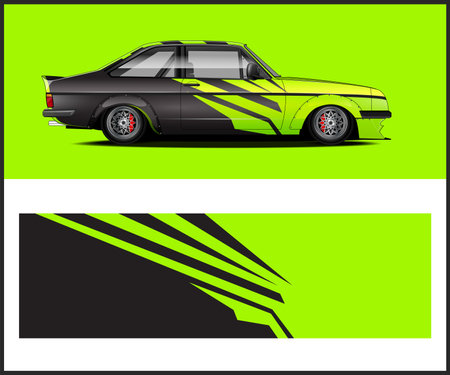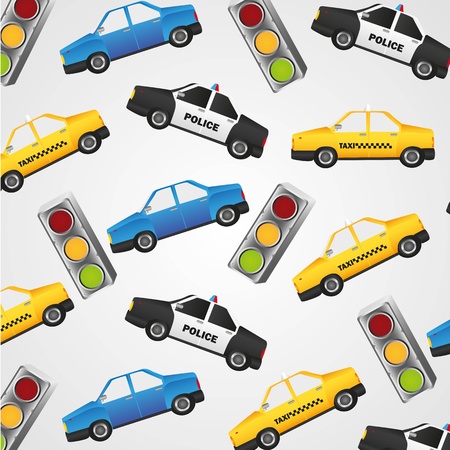1. Introduction
Racing has always been a thrill for car enthusiasts. Whether its the rush of high-speed action, the roar of powerful engines, or the skill required to maneuver a car at top speeds, racing attracts many. But theres a crucial difference between street racing and legal racing. Both involve high-performance vehicles and competitive driving, yet they exist in entirely different worlds.
What Is Street Racing?
Street racing refers to illegal, unsanctioned races that take place on public roads. Typically, these races are organized informally through social media or word of mouth and occur late at night to avoid law enforcement. Street racing is dangerous—not just for the racers but for bystanders and other drivers who may unknowingly become part of the risk.
What Is Legal Racing?
Legal racing is conducted within a controlled environment, such as a professional racetrack. These events follow strict safety regulations, ensuring that both drivers and spectators are protected. Types of legal racing include drag racing, circuit racing, and autocross, all of which are sanctioned by motorsport organizations and governed by rules that prioritize safety.
Key Differences Between Street Racing and Legal Racing
| Aspect | Street Racing | Legal Racing |
|---|---|---|
| Location | Public roads (illegal) | Race tracks (legal) |
| Safety Measures | Minimal to none | Strict safety protocols |
| Regulation | Unregulated, illegal | Sanctioned by official organizations |
| Legal Consequences | Fines, vehicle impoundment, jail time | None (as long as rules are followed) |
| Risk Level | High | Low |
Why People Participate
Both street racing and legal racing attract people for the excitement, but their motivations often differ. Street racers are often drawn to the adrenaline rush, rebellion, and underground culture. On the other hand, legal racers are motivated by competition, skill mastery, and the opportunity to race without legal risks.
The Popularity of Racing
Despite the dangers and legal implications, street racing remains prevalent, particularly in urban areas where car culture is strong. Legal racing, however, continues to grow in popularity due to accessible racetracks, professional events, and televised motorsport competitions like NASCAR and Formula 1.
2. What Is Street Racing?
Street racing is the illegal practice of racing vehicles on public roads. Unlike legal racing, which is regulated and conducted in safe environments, street racing is unregulated, highly dangerous, and involves significant legal risks.
Definition of Street Racing
Street racing typically refers to unauthorized and unsanctioned races held on public streets. These races can be spontaneous or organized and often involve high-performance cars pushing their limits in unsafe conditions. Participants may engage in drag racing, drift racing, or highway racing, often without the necessary safety measures in place.
Common Locations for Street Racing
Illegal street races usually occur in areas with low traffic and minimal police presence. Below are some of the most common locations:
| Location Type | Common Characteristics |
|---|---|
| Industrial Areas | Low traffic at night, large open roads |
| Highways | Long, straight roads, often late at night |
| Empty Parking Lots | Used for drifting and stunt driving |
| City Streets | Riskier, involves dodging traffic and pedestrians |
Risks of Street Racing
Street racing poses significant dangers to both participants and bystanders. Some of the major risks include:
- High-Speed Collisions: Public roads are not designed for racing, increasing the likelihood of crashes.
- Injury or Death: Street racers often lack proper safety gear, making accidents even more dangerous.
- Harm to Innocent People: Pedestrians and other unsuspecting drivers can be caught in dangerous situations.
- Vehicle Damage: High speeds and reckless driving can cause severe damage to cars.
Legal Consequences of Street Racing
Engaging in street racing can lead to serious legal trouble. Common penalties include:
| Consequence | Details |
|---|---|
| Fines | Heavy fines that vary by state |
| License Suspension | Driving privileges can be revoked |
| Vehicle Impoundment | Cars used in illegal racing may be seized |
| Jail Time | Racers can face misdemeanor or felony charges |
| Criminal Record | A street racing charge can impact future opportunities |
Given the high risks and severe consequences, participating in street racing is not worth the thrill. Legal alternatives, such as sanctioned track events, provide a much safer and more enjoyable environment for racing enthusiasts.

3. What Is Legal Racing?
Overview of Sanctioned Racing Events
Legal racing, also known as sanctioned racing, takes place in controlled environments under strict regulations. These events are organized by official motorsports organizations to ensure fair competition and, most importantly, safety for drivers and spectators. Unlike street racing, legal events occur on closed tracks or designated road courses with medical teams, safety barriers, and professional oversight.
Types of Legal Motorsports
There are many forms of legal racing, each with its own set of rules and requirements. Here are some of the most popular types:
| Type of Racing | Description |
|---|---|
| Drag Racing | A straight-line race, typically a quarter-mile, where cars accelerate as fast as possible to the finish line. |
| Circuit Racing | Cars compete on a closed-loop track with multiple turns, requiring both speed and handling. |
| Drifting | A style-based competition where drivers slide their cars through turns while maintaining control. |
| Rally Racing | Timed races across varied terrain such as gravel, dirt, or snow, often held on public roads that are closed for the event. |
| Time Attack | Drivers compete to set the fastest single-lap time on a racetrack. |
Safety Regulations in Legal Racing
Safety is a top priority in legal racing. Unlike illegal street racing, where there are no enforced rules, sanctioned events follow strict safety regulations to protect everyone involved. These include:
Required Safety Gear
Every driver must wear protective gear, including:
- Racing helmets (meeting FIA or DOT standards)
- Fire-resistant suits, gloves, and shoes
- Five- or six-point harness seat belts
Track and Vehicle Safety Standards
Legal racing tracks have designated run-off areas, tire barriers, and medical response teams in case of an accident. Vehicles must also pass technical inspections to ensure they meet safety requirements, such as:
- Proper roll cages for crash protection
- Functional fire suppression systems
- Brake and tire checks before each race
By following these safety measures, legal racing provides a thrilling yet controlled environment for motorsports enthusiasts to enjoy competition without the dangers of illegal street racing.
4. Key Differences Between Street and Legal Racing
Street racing and legal racing might seem similar on the surface, but when you dig deeper, the differences become clear. From safety measures to costs and legality, let’s break down the key distinctions between these two forms of racing.
Safety Measures
One of the biggest differences between street racing and legal racing is safety. Legal racing events follow strict safety protocols to protect drivers, spectators, and officials. On the other hand, street racing lacks oversight, making it highly dangerous.
| Aspect | Street Racing | Legal Racing |
|---|---|---|
| Safety Gear | Often minimal or none | Mandatory (helmets, fire suits, roll cages, harnesses) |
| Emergency Services | Not available | Always present (medical personnel, rescue teams) |
| Track Safety Features | No barriers, run-off areas, or safety measures | Purpose-built tracks with barriers, guardrails, and safety zones |
Organization & Structure
Legal racing follows a structured format with official organizers, rules, and systems to ensure fair competition. Street racing, however, is unregulated and often chaotic.
Race Rules & Regulations
- Street Racing: No official rules, usually informal arrangements, and disputes can lead to fights or dangerous behavior.
- Legal Racing: Organized by racing bodies with standardized rules, licensed officials, and predefined competition formats.
Event Management
- Street Racing: Organizers are often just groups of friends or local racers who set up the races through word of mouth or social media.
- Legal Racing: Managed by professional organizations that oversee schedules, participant registration, and track safety.
Legality & Consequences
The legal status of each type of racing is another major factor. Street racing is illegal in most places and can result in severe legal consequences, while legal racing takes place under sanctioned conditions.
Potential Legal Issues
- Street Racing: Leads to fines, arrests, car impoundment, license suspension, or even jail time.
- Legal Racing: Completely legal, with proper permits and permissions.
Impact on Reputation
- Street racers may gain notoriety in underground circles but face public backlash.
- Legal racers can build a reputable career and even attract sponsorship opportunities.
Costs & Financial Considerations
The cost of participation in either form of racing can vary. While street racing may seem cheaper upfront, the hidden costs can be much higher.
| Expense | Street Racing | Legal Racing |
|---|---|---|
| Entry Fees | None | Varies (from local events to major competitions) |
| Car Preparation | Basic modifications (depending on personal discretion) | Strict requirements for safety, performance, and compliance |
| Legal Fines | Possible (fines, towing, legal fees) | None, as its a sanctioned event |
Overall Experience
While both types of racing involve high-speed thrills and adrenaline, the overall experience could not be more different.
Atmosphere & Environment
- Street Racing: Uncontrolled, dangerous, and often rushed to avoid law enforcement.
- Legal Racing: Professional, safe, with well-maintained tracks, pit crews, and spectators.
Long-Term Opportunities
- Legal racing provides opportunities for sponsorships, competitions, and professional careers.
- Street racing is risky with no real path to a professional career.
5. Consequences and Risks of Street Racing
Severe Dangers of Illegal Street Racing
Street racing is an extremely hazardous activity, not only for those participating but also for innocent bystanders. Unlike legal racing, which takes place on controlled tracks with safety measures in place, illegal street races happen on public roads, creating a serious risk of accidents, injuries, and fatalities.
Common Risks Involved
| Risk | Description |
|---|---|
| High-Speed Collisions | Drivers often lose control, leading to deadly crashes. |
| Injury to Innocent Bystanders | Pedestrians and other drivers can become unintended victims. |
| Lack of Emergency Services | No immediate medical response increases the severity of injuries. |
Legal Penalties for Street Racing
Illegal street racing is a criminal offense in the U.S., with laws varying by state but uniformly carrying severe consequences. Aside from potential jail time and fines, offenders may lose driving privileges, face vehicle impoundment, and even a permanent criminal record.
Potential Legal Consequences
- Fines ranging from hundreds to thousands of dollars.
- Suspended or revoked drivers license.
- Vehicle confiscation or destruction.
- Possible jail time, depending on the severity of the offense.
- Increased insurance premiums or policy cancellation.
Societal Impact of Illegal Street Racing
Illegal street racing doesnt just affect those directly involved—it has a broader impact on communities, law enforcement, and everyday road users.
Negative Effects on Society
- Property damage from crashes can lead to costly repairs.
- Law enforcement resources are diverted from other emergencies.
- Noisy and reckless behavior disrupts neighborhoods.
- Encourages younger drivers to engage in dangerous activities.
Why Legal Racing Is the Better Alternative
Instead of risking legal trouble and endangering lives, legal racing events provide a controlled environment for speed enthusiasts. Race tracks offer safety measures, medical personnel, and skilled professionals ensuring that competitions take place under regulated conditions.
6. Encouraging Legal Racing Alternatives
For car enthusiasts who crave speed and competition, there are plenty of legal alternatives to street racing. These options allow drivers to experience the thrill of racing in a safe, controlled environment while avoiding the risks and consequences of illegal street racing.
Why Legal Racing Is the Better Choice
Legal racing provides a structured and safe way to enjoy high-performance driving. Here’s why its the superior option compared to street racing:
| Aspect | Street Racing | Legal Racing |
|---|---|---|
| Safety | No safety measures, high risk of accidents | Tracks have expert supervision, medical crews, and barriers |
| Legal Consequences | Possible arrests, heavy fines, and car impoundment | 100% legal with no risk of penalties |
| Skill Development | Reckless driving with no structured learning | Opportunities for professional coaching and skill-building |
| Environment | Unpredictable public roads with pedestrians and traffic | Designed tracks with proper racing conditions |
Ways to Get Involved in Legal Racing
If you’re looking for legal and exhilarating ways to satisfy your need for speed, here are some great options:
Track Days
Many race tracks offer “track days” where drivers can bring their street cars and race in a controlled, safe environment. These events allow enthusiasts to push their cars to the limit without breaking the law.
Autocross
Autocross events take place in large, open parking lots where drivers navigate a cone-marked course against the clock. Its a great way to sharpen your car control skills and experience racing without excessive speeds.
Drag Strips
For those who love straight-line speed, legal drag strips provide a safe way to test acceleration. These tracks have proper timing equipment and safety measures, eliminating the dangers of illegal street drag racing.
Amateur Racing Leagues
Various amateur racing series, such as SCCA and NASA, allow everyday drivers to compete in organized, structured races. These leagues provide a competitive yet safe platform for car enthusiasts to race professionally.
Go-Kart Racing
If youre looking for an affordable and accessible way to experience racing, go-kart tracks can provide an adrenaline rush with tight corners and fast action. Many professional racers started their careers in karting.
Finding Local Racing Events
There are numerous resources available to find legal racing events near you:
- Visit your local race track’s website for event schedules.
- Check organizations like the SCCA or NASA for regional races and autocross events.
- Join online car forums and social media groups where enthusiasts share event information.
- Visit local car meets—many racers attend and can help newcomers get involved.
By choosing legal racing alternatives, car enthusiasts can enjoy their passion responsibly while improving their skills and staying safe. It’s the best way to experience high-speed thrills without the dangers of street racing.


